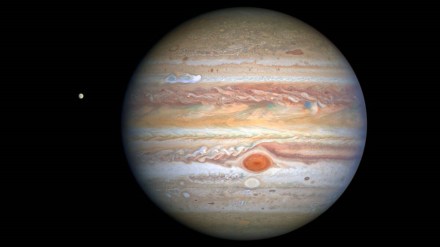With NASA’s spacecraft sending back details related to Jovian moons Ganymede and Europa in Jupiter, the US space agency is now all set to study the pictures of Jovian moon Io, NASA’s Jet Propulsion Laboratory (JPL) has said.
As per the agency, Moon Io on Jupiter is believed to be the most volcanic place in the solar system. NASA is looking to research it for the next one-and-half years. Even as NASA conducted the first of the nine flybys on December 15, 2022, two of them had spacecraft flying just 1,500 kilometres away, near the moon’s surface.
Also read: Delhi AQI: Another day with ‘very poor’ air quality in the capital, AQI at 310
Speaking at a press event, Scott Bolton, principal investigator for NASA’s Juno spacecraft, said that his team had been able to observe how it behaves in 30 orbits, and how it evolves. The spacecraft had been orbiting the planet since 2016. It earlier flew by Ganymede, and also by Europa in the early part of 2022. It has also flown by Jupiter’s moon at a distance of 80,000 km. However, by 2023, Juno is expected to get much closer to it by around 1,500 km.
Notably, Io is not only larger than the earth’s moon, but its diametre is also one-quarter of our planet. Also, one side of the moon always faces Jupiter. The moon revolves around Jupiter only once.
The thin atmosphere in Moon IO consists of sulphur dioxide. However, among the most important features of Jovian moons are volcanoes. There are hundreds of volcanoes here. Of them some volcanoes have fountains of lava that are erupting thousands of kilometres high. It also contains lakes of molten silicon lava.
Also read: NASA to launch first global water survey – Here’s everything you need to know
As per BBC, the volcanoes in Moon IO are driven by proximity to Jupiter, suggesting that the moon has been subjected to heating.While the spacecraft was sent to Jupiter to check the plate’s evolution, it has also taken observations from four moons of the planet, which include Callisto, Europa, Ganymede and Io.
